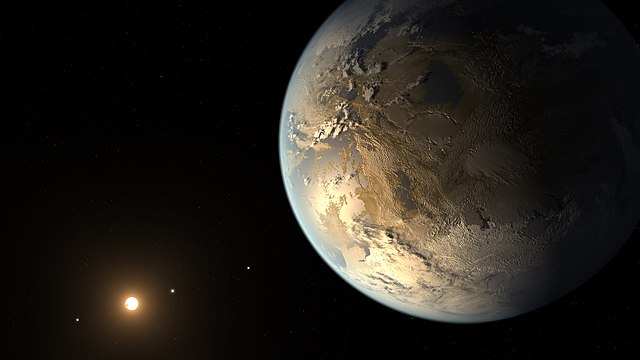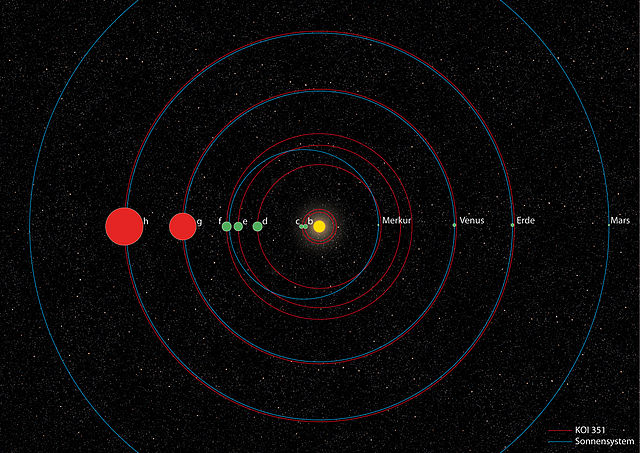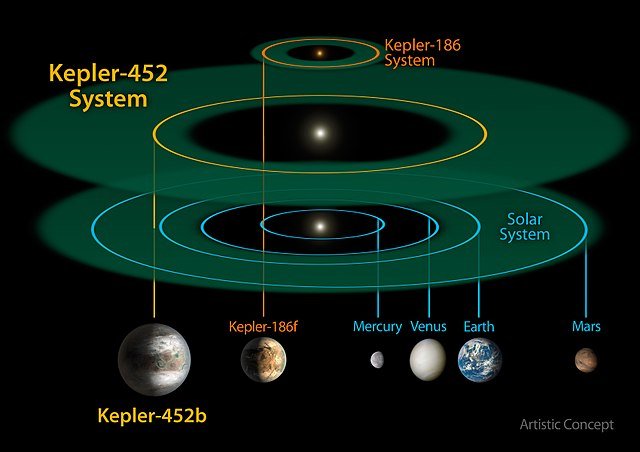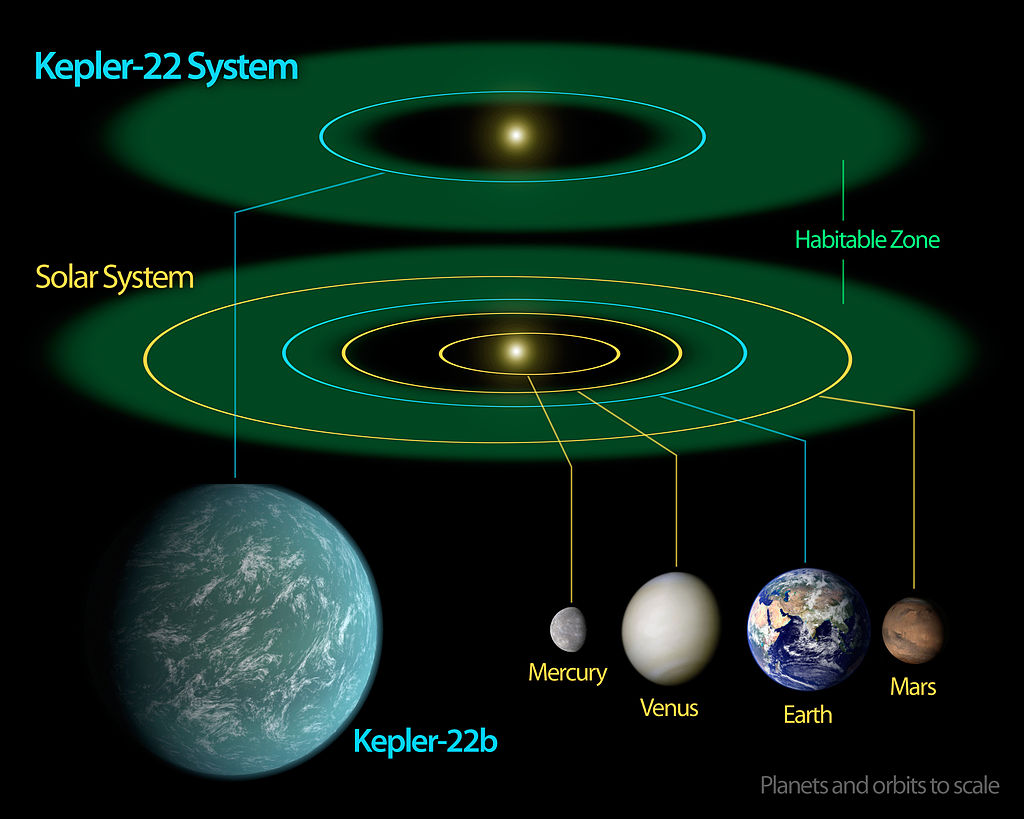GOTCHA! Hunting for Exoplanets 🛰️🔭 Part 2/2 [ENG]

Image by NASA Ames/SETI Institute/JPL-Caltech - [1], [2], Link
This is the continuation of my article about Exoplanets.
In the first part we took a look at the basics of what an Exoplanet is, how to discover Explanets, as well as a little bit of history.
In the second part we´ll take a look on upcoming missions to discover even more Exoplanets, and we´ll discuss the most promising Earth-sized planets found so far.
Recap
- An Exoplanet is a planet which is not orbiting our Sun
- 3,743 Exoplanets found so far (amount rising steadily)
- 97% of them were detected indirectly
- Statistic says that 1 in 5 Sun-like stars have an Earth-sized planet in the habitable zone
- An Exoplanet gets the name of the star followed by a "b" for being the second object in the system. If there are more object, the naming continues like that (c, d, e, ...)
The most important satellites searching for Exoplanets
Kepler
The Kepler satellite started in March 2009, with its mission to search for Exoplanets using the transit method. Indeed it discovered more than 2,500 Exoplanets.
The evaluation of the data, as well as the mission itself is still ongoing.
In July 2012 and May 2013 problems with the reaction wheels began to appear, making it impossible to keep the satellite aligned to its field of observation.
In May 2014 NASA announced that Kepler is still searching for Exoplanets in a modified mission, called K2, and that it will continue doing so until April 2018. That´s when it runs out of fuel.
TESS
TESS is short for "Transiting Exoplanet Survey Satellite" and is the direct successor of the Kepler satellite (launch date April 2018).
It´s even using the same method of detecting Exoplantes, the transit method, but its focus lies on bright and near-earth stars.
With new technology built inside, it should be possible to get data about the mass, size, density and orbit of Earth-sized planets. The most promising worlds may also be reviewed by the James Webb Space Telescopes (JWST) , which is meant to leave Earth in spring 2019. The JWST will be able to characterize the atmospheres of distant worlds.
CHEOPS
CHEOPS stands for CHaracterising ExOPlanets Satellite and is an European Space Agency (ESA) mission with an expected launch in late 2018.
The goal of CHEOPS is set to accurately measure the radii of Exoplanets in the "super-Earth" to Neptune range (1-6 Earth radius). Knowing both the mass and the size of a planet lets us determine their density and thus their approximate composition.
The TESS and CHEOPS, together with the Extremely Large Telescope currently built in Chile, which will also be hunting for Exoplanets, will form a strong alliance for future discoveries of extra-solar planets.
Which brings us to the next topic:
The most promising discoveries of Earth-sized Exoplanets within the habitable zone so far
Most of them were made by the Kepler satellite using the transit method, which gives data to determine not only the size of the planet, but also its orbital period and distance to its home-star.
Kepler-90 or KOI-351
The first system in which 8 planets were discovered.
The 6 innermost planets are "Super-Earths" or "Mini-Neptunes" (so either rocky or gaseous)
The 2 outer ones (g +h) are gas giants.

The picture shows only 7 planets, because the 8th was discovered just recently in Dec 2017
Kepler-452 (+b) and Kepler-186 (+f)
Kepler 452 system has the first nearly Earth-sized planet around a Sun-like star within the habitable zone, discovered July 2015.
While Kepler-186 as the most Earth-sized planet, also within the habitable zone, but around a red dwarf star, discovered April 2014.

The list of Earth-sized planets is indeed a bit longer, but includes only a few dozen, because with the method used, they are not to be easily detected. If we are really looking for life outside of Earth, we most narrow down our search to planets having liquid water on their surface. We currently have 18 planets on this list .
Kepler-22b
... being the most promising of them.
It orbits a sun-like star, has an estimated surface temperature of 22°C and is within the habitable zone. Only its composition is currently unknown.
But even if we know that the planet has water on its surface and orbits its home-star within the habitable zone - the last big question, to surely know if it inhabits life is not that easily answered.

Thank you for taking the journey with me.
Stay tuned for more astronomical stuff to come! 🔭🌌
Sources:
- https://en.wikipedia.org/wiki/Kepler_(spacecraft)
- https://en.wikipedia.org/wiki/Exoplanet
- http://sci.esa.int/cheops
- https://en.wikipedia.org/wiki/CHEOPS#Goals
- https://en.wikipedia.org/wiki/Kepler-452
- https://de.wikipedia.org/wiki/Kepler-90
- https://en.wikipedia.org/wiki/List_of_extrasolar_candidates_for_liquid_water



That's a very creative name the Chileans came up with .. 😐
Well after the "very large telescope" comes the "extremely large telescope" :D and it´s only built in Chile, money and idea comes from Europe! It´s the European Southern Observatory in Chile, Atacama desert
What would the extraterrestrials living in some of those planets think, when they see the Tesla car navigating in space with mannequin inside "driving" it :P?
They´d think: give him a vote :p
Super Beitrag zu einem echt spannenden Thema
Grüße
Danke, jetzt auch auf #deutsch ;)
Werde sehen, dass ich dann in Zukunft auch aktuelle News bringe!
Wrote much important information about science.
keep it up.
You got me! I consider myself being up to date but I didn't know anything about TESS except hearing(reading) its name. I will do more reading about it on my first free moment.
Also can we finally expect that James Webb will launch in 2019? It was postponed so many times that Elon Musk himself would consider it offensive :D
I find the Kepler research so good and reliable but I hate that we can't go there faster. It is one of the things that I hate most about life, having little possibility to actually follow up on the research during our lifetime.